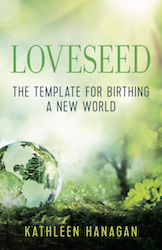
Self-esteem? Why is it so important? Self-esteem statistics are hard to come by, but there are figures that say that two-thirds of Amercians have low self-esteem, and it is indeed a problem, or rather could be the root of other problems that are sky-rocketing. I define self-esteem as the capacity to perceive one’s self as lovable and capable.
What I do know, from direct experience with clients and their children, in speaking with colleagues and in reading studies, is that there is more anxiety and depression in children at younger ages than ever before —particularly anxiety— and that it is a big problem. Could it be as we (therapists, parents, teachers, doctors) focus on treating the symptoms, we are putting the cart before the horse? Might we be deceived by the “veil of symptomatology,” where the focus is on the symptoms, rather than the cause, which would indicate a different treatment? Could anxiety and depression be the result of low self-esteem, rather than the causes? Is there something we can do about that?
Studies with infants and their caretakers show that sufficient positive affective interactions are needed for a baby to thrive cognitively, emotionally, socially, and even physically. These interactions are mostly mirroring and empathic responsiveness of mothers to their infant’s expressions of affect. The mother mirrors the child’s affect with tenderness, and the young infant already begins to learn the response. It is as if mother and child are mirroring their loveseeds,which is what I call the essence and infinite potential within each person. It is an exquisite exchange that creates a template for future relationships. Feeling-wise, it is the same as falling in love when it happens, and elicits many of the same physiological responses. All of this creates new neural pathways of connection in the child and the mother, literally rewiring their brains.
Dysfunctional parent-infant interactions lack behaviors that encourage this sustained inter-subjective exchange, and it is happening more and more. A parent ideally remembers to mirror his/her child, no matter what, and yes, we can all get busy. But the distraction from technology devices is rampant, and the seduction to pay more attention to taking photos or answering a text is creating imbalances. Insufficient mirroring can leave a child lost and not trusting his/her own knowing, and can lead to a feeling of not being important or significant. In addition to insufficient or deflective mirroring, there is mirroring that is conditional on the child being or acting a certain way, which leads the child to form a more rigid personality, and the feeling of never being good enough, no matter how hard the person works.
Children from homes where the parents really care for and love their children, can end up feeling insignificant and lost, or not good enough, for many reasons, including social woundings for being different or shut out of social groups. I do believe, however, that the key to changing this trend toward more anxiety/depression is to ramp up the mirroring and nurturance, at any age, no matter what the symptom. That doesn’t mean no structure, but it means that you slow down and take the child in for who he/she is as a unique soul. Do the work of healing your own wounds so that you can be a clear mirror to the child that helps them see their goodness and their gifts. ![]()
When the parent carries an unhealed wound and is not aware of the effect of the past, there is often a projection of unfinished emotional business onto the child, burdening the child with carried pain that it cannot metabolize. It could be as unconscious as feelings of a mother who had a strained relationship with her own father, toward a male child, or of a father toward the child as competition, but felt at a deep level, because both parents really love their son. It could be a different kind of narcissistic wounding if the parent sees the child as the idealized version of him/her self, and uses the child as a mirror, thus burdening the child with being perfect and special to reflect that back to the parent. It happens all the time!
Whether neglected, criticized or used, the child will begin to adapt, and create a false self that carries the burden of not feeling lovable and capable. The child’s loveseed begins to go underground, and is not able to receive the light and water (your love and attention) that it needs to thrive. It is quietly traumatic, and the pain can be elusive and deep. The Swiss psychologist, Alice Miller, known for her books on parental child abuse, says, “it is not the trauma itself that is the source of illness but the unconscious, repressed, hopeless despair over not being allowed to give expression to what one has suffered and the fact that one is not allowed to show and is unable to experience feelings of rage, anger, humiliation, despair, helplessness, and sadness.” .
Studies have shown that both mothers, like those who utilized assistance for single mothers, and fathers spend less time mirroring male infants than female infants, and more time being physical with their male infants than attuned emotionally. In other words, males are less likely to have their loveseeds nurtured than females. The implications of that are not lost to anyone who knows what is going on in the world today. From one senseless mass murder after the other to the increasing number of terrorist activities worldwide, we see the results of males being separated from their loveseeds.
I once had a wise psychodrama trainer, Dale Buchanan, who said “We are all living in a huge hall of mirrors, and it is a miracle when we are really seen, or when we fully see another human being.” That had a huge impact on me, when I fully understood the implications! Without sufficient mirroring we are each wired to project, deflect, and protect, which leaves us incapable of clearly seeing another person.
Indeed, narcissism is the wound of the times. A narcissistic wound is inflicted when you are not being heard, seen or understood for who you really are. What this means is that countless people are being narcissistically wounded all the time. ![]() The results are seen everywhere, in the rise of hate crimes, addiction, and mental illness.
The results are seen everywhere, in the rise of hate crimes, addiction, and mental illness.
The mother, disconnected from her own loveseed, from lack of support, familial wounds, financial strain, depression, working two jobs, falls into a chair and looks into the light-filled eyes of her innocent infant. Rather than tap into the love inside her being and allow it to pour forth into the child, she feels empty, exhausted, and emotionally needy. The child, still sourced from love, looks at her adoringly, love pouring out of its eyes.
This can be a truly awakening moment for a mother if she can allow the love of the child to activate her own loveseed, which is able to resonate with and take in the essence of the child. This could elicit the pouring forth of love to the child. But if that mother’s loveseed is so buried, and if she does not have enough support, this exchange will not take place and the infant becomes the mirror to the mother. The pain is so great, that this moment begins a process of dissociation, which repeats the myth of separation, over and over.
The child has no mirror for who she is, and energetically begins to hide. This same thing happens with fathers, since, for an infant, mom and dad are the world! Imagine what it would be like if mirroring and emotional atunement were taught in the schools, and all new mothers had plenty of help when they got home. It would change the entire culture if those two things happened!
In 1975, Edward Tronick and colleagues first presented the “still face experiment” to members of the Society for Research in Child Development. I remember seeing this video while studying for my Master’s in Social Work, and it touched me profoundly. I recommend you take three minutes and watch.
An infant is in his high chair “interacting” with his mother, who has been instructed to be completely expressionless and non-responsive. The child makes repeated attempts to get mother to respond, and when these attempts fail, the infant withdraws, orienting his face and body away from his mother with a withdrawn, hopeless facial expression. Within three minutes he has spit up and is screaming.
The “still face experiment” It is one of the most replicated findings in developmental psychology and has since been replicated with mobile devices. I don’t think you have to be a research psychologist to make the connection between the sky-rocketing instance of anxiety in children and the rise in the use of cell phones. Anxious mom, anxious dad, anxious child, all mirrors to each other.
We can all begin to change this today.
Pause to look at the child or adult who is speaking to you.
Take them in.
Reflect back that you got them.
Add something positive, some appreciation or recognition or validation of them in the moment.
You will begin to change things at the root.
Self-esteem will grow.
Everyone will flourish.


